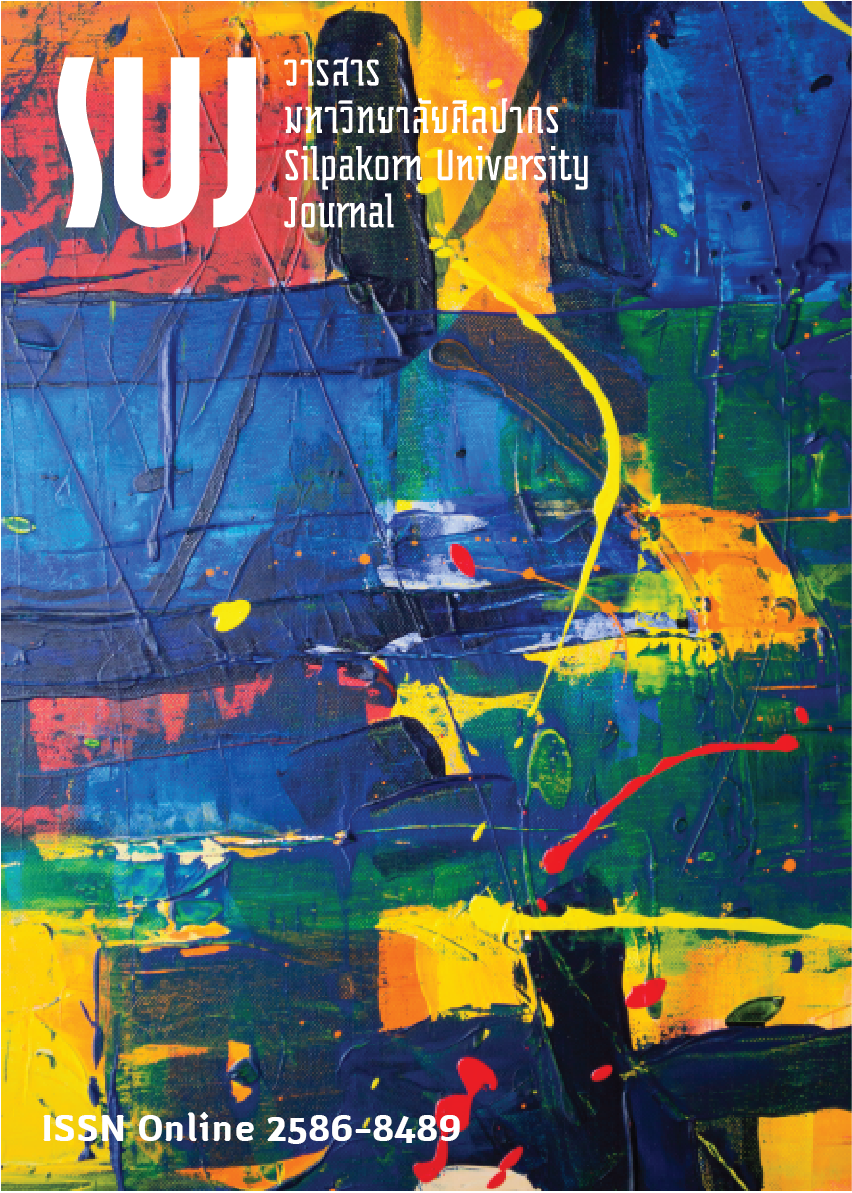ศิลปะเด็ก: คุณค่าจากความไร้เดียงสา (Child art: the value from innocence)
Main Article Content
Abstract
งานศิลปะเด็กที่แสดงออกมาอย่างไร้เดียงสาในช่วงอายุ 4 - 11 ปี โดยการวาดภาพของเด็กเป็นไปเพื่อความปรารถนาที่จะสื่อสารและแสดงออกถึงความรู้สึกภายในที่บริสุทธิ์จริงใจ ทำให้ความเหมือนจริงมิใช่เป้าหมายในการแสดงออกของเด็ก แม้ว่าการวาดภาพของเด็กจะมีข้อจำกัดของประสบการณ์ และพัฒนาการด้านต่าง ๆ แต่เด็กชดเชยข้อจำกัดเหล่านั้นด้วยการใช้จินตนาการ ซึ่งกลายเป็นลักษณะสำคัญ ของธรรมชาติการแสดงออกทางศิลปะเด็ก ยิ่งไปกว่านั้นยังเป็นสิ่งบ่งชี้ถึงความสำเร็จของพัฒนาการทุกด้าน อย่างไรก็ตามศิลปะของเด็กมีความแตกต่างจากศิลปินที่อาจเปรียบได้กับโลกมายา จึงไม่อาจใช้การวิจารณ์ศิลปะเพื่อตัดสินคุณค่าความงามของผลงานศิลปะของเด็กได้ ดังนั้นการประเมินพัฒนาการทางศิลปะภาพวาดของเด็กจึงต้องอยู่บนพื้นฐานของความสำเร็จของพัฒนาการในเด็กแต่ละคน ที่แสดงออกมาผ่านการท่องจินตนาการ
Children can create their art based upon their inside innocent thought. In reality; however, it is not a matter for children. Although children have limitations of experiences, such as emotion, experience, and life experience, still they can compensate for their experience with imagination into their drawing. This becomes the nature of child art. Moreover, child art is evidence of the children’s successful development. Therefore, the quality of child art and artist’s work cannot be comparable since they are different. Child art reflects imagination from their inner world, their successful development, whereas Artist’s work reflects the outer surrounding world which influences to him/her. To value child art; hence, it should be aimed at their growing development, creativity, and imagination rather than the quality of the surrounding world imitating with regard to their drawing.
Downloads
Article Details

This work is licensed under a Creative Commons Attribution-NonCommercial-NoDerivatives 4.0 International License.
References
Boeree, G. (2006). Erik Erikson [1902 - 1994]: Personality Theories. Shippensburg: Psychology Department, Shippensburg University.
Boyatzis, C., & Watson, M. (1993). Preschool Children’s Symbolic Representation of Objects through Gestures. Child Development, 64(3): 729-735.
Fleming, J. (2004). Erikson’s Psychosocial Developmental Stages. [Online]. Retrieved April 5, 2019 from https://pdfs.semanticscholar.org/ab44/d6a2d3178e4e159108ab5333504d23cc9508.pdf
Gardner, H. (1994). The Arts and Human Development. New York: Basic Books.
Ginsburg, H., & Opper, S. (2016). Piaget’s Theory of Intellectual Development. [Online]. Retrieved April 5, 2019 from https://www.spc4erp.com/uploads/about-1471606029-piagets-theory-of-intellectual-development.pdf
Grandstaff, L. (2012). Children’s Artistic Development and the Influence of Visual Culture. Master’s dissertation, The University of Kansas, Lawrence, Kansas, United States.
Klinsuntorn, Chattawa. (2017). Art Binding and Long, commemorating 3 years of the death of Professor Emeritus Prayat Pongdam (National Artist) (ศิลปะ ผูกพัน ยืนยาว รำลึก 3 ปีแห่งการจากไป ของศาสตราจารย์เกียรติคุณ ประหยัด พงษ์ดำ (ศิลปินแห่งชาติ)). [Online]. Retrieved April 17, 2019 from https://www.matichonweekly.com/column/article_46772
Matt, F. (2011). The Stages of Artistic Development. [Online]. Retrieved April 10, 2019 from https://thevirtualinstructor.com/blog/the-stages-of-artistic-development
Pichayapaiboon, Poonarat. (2018). Psychology of Art: The Empirical Aesthetics (จิตวิทยาศิลปะ: สุนทรียศาสตร์เชิงประจักษ์) (2nd ed.). Bangkok: Chulalongkorn University Press.
Reynolds, L. (2006). La Baiser (The Kiss). [Online]. Retrieved April 17, 2019 from https://www.flickr.com/photos/lwr/318846445
Simatwa, E. (2010). Piaget’s Theory of Intellectual Development and Its Implication for Instructional Management at Pre-secondary School Level. Educational Research and Reviews, 5(7): 366-371.
Tungcharoen, Wiroon. (1983). Art Education (ศิลปศึกษา). Bangkok: Visual Art Press.
Ua-anant, Malichat. (2002). Art Education (ศิลปศึกษาแนวปฏิรูปฯ). (2nd ed). Bangkok: Chulalongkorn University Press.
Ungerer, J., et al. (1981). Developmental Changes in the Representation of Objects in Symbolic Play from 18 to 34 Months of Age. Child Development, 52(1): 186-195.


